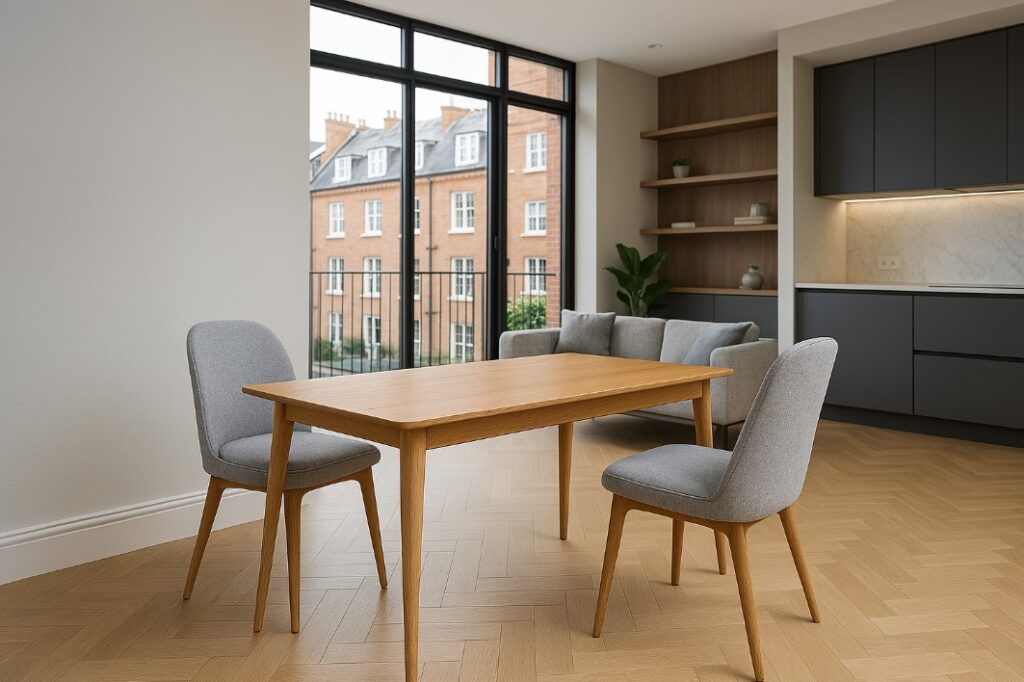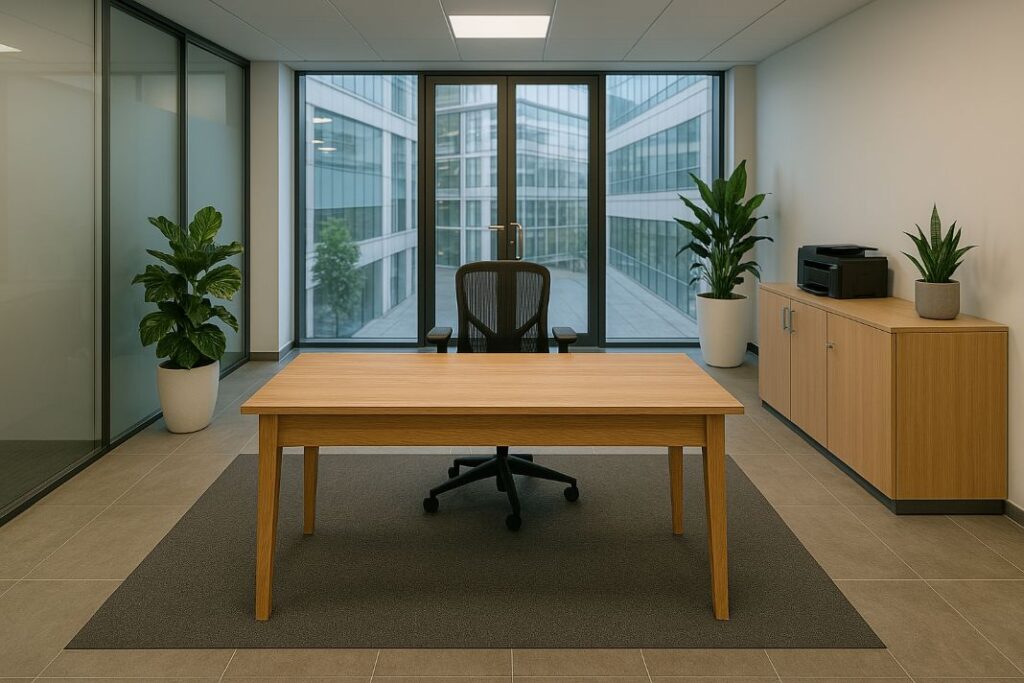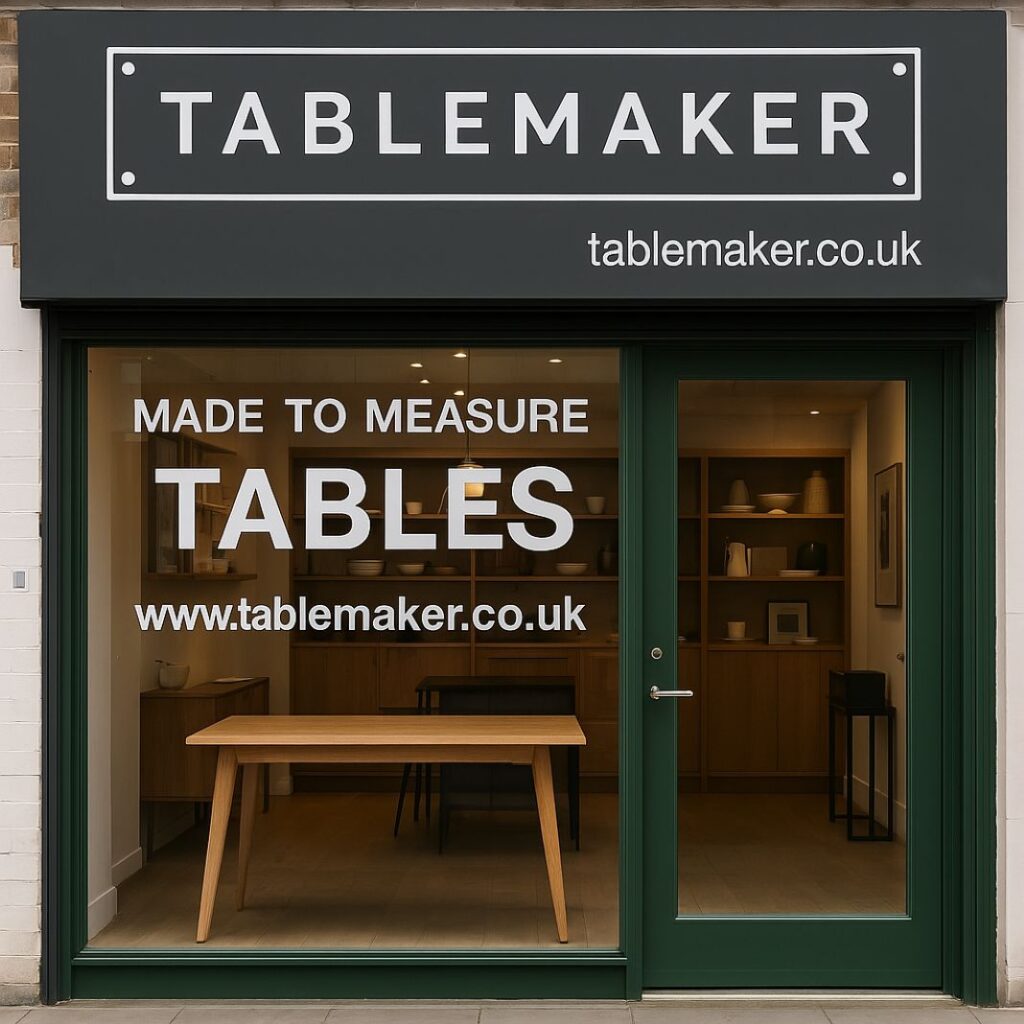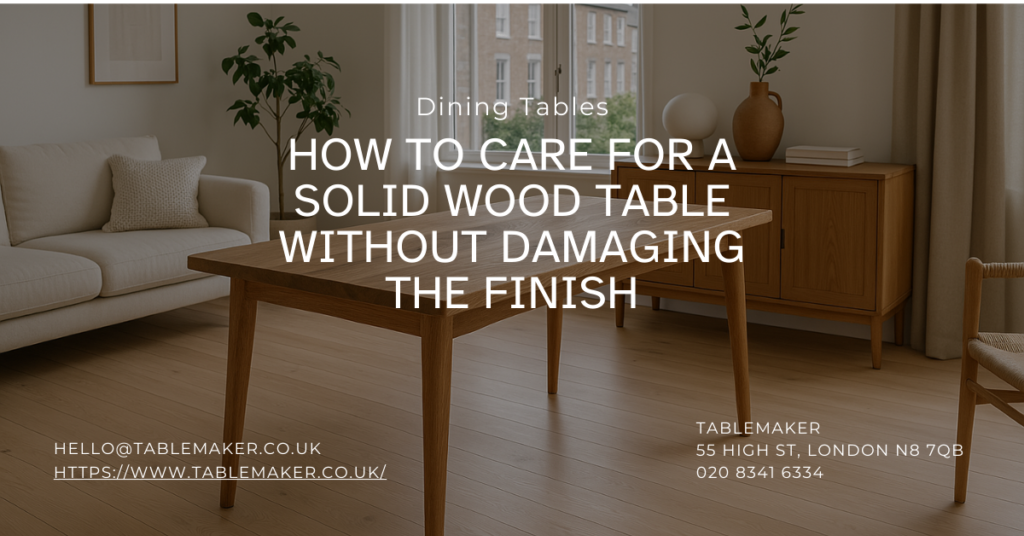
How to Care for a Solid Wood Table Without Damaging the Finish
How do you care for a solid wood table without damaging the finish?
To look after a solid wood table without affecting the finish, clean it regularly with a damp, lint-free cloth, keep it out of direct sunlight and away from heat sources, and use protective items like coasters, placemats and soft covers. Avoid harsh chemicals, excessive moisture, or rough cloths. Natural wood responds to its environment, so the key is to protect both the surface and the structure from wear, moisture and temperature changes.
In this article about solid wood table care we have covered:
- How do you care for a solid wood table without damaging the finish?
- The beauty and durability of solid wood tables
- Why sunlight and heat can damage your table
- Using coasters, placemats and table covers
- What is the best way to clean a solid wood table?
- Avoiding common cleaning mistakes
- How to remove scuff marks or light scratches
- Fixing deeper scratches and dents
- How to deal with water rings and stains
- Long-term care and re-oiling or waxing
- Maintaining consistency in humidity
- Why furniture polish should be used with care
- Positioning matters more than you think
- Seasonal checks and regular maintenance
- Final point by Tablemaker
- Thinking of a New Table for Your North London Home?
- FAQs
The beauty and durability of solid wood tables
Solid wood tables are a timeless choice that bring warmth and character into any room. Each piece is unique, showcasing natural grain patterns and rich tones. They are also hardwearing and, when cared for properly, can last for decades. However, they are not invincible. Everyday use, spills and sunlight can cause wear and damage if ignored. Proper care ensures your table stays in good shape while maintaining its original finish.
Why sunlight and heat can damage your table
Natural wood expands and contracts with temperature changes. Direct heat from radiators or sunlight can cause the wood to dry out and crack. It can also lead to discolouration, where one part of the table becomes lighter than the rest. Try to keep your table away from windows, or use blinds or curtains to reduce exposure during peak daylight hours. Also, keep it at least two metres away from any radiators or heat sources.
Using coasters, placemats and table covers
One of the simplest ways to protect the surface is to use coasters and placemats. These prevent rings from cold drinks and heat marks from hot plates. During family gatherings or meals, using a cloth or cover can shield the table from spills and knocks. For special occasions, consider using a full table protector to avoid staining and scratching.
Pro Tip: Avoid placing your wood table too close to radiators or direct sun — it can dry out the timber and cause warping or hairline cracks.
What is the best way to clean a solid wood table?
Cleaning should be gentle. Use a soft microfibre cloth, dampened slightly with warm water. For everyday cleaning, this is usually enough. Avoid soaking the cloth. Excess moisture can break down the finish or, worse, seep into the wood and cause swelling. For tougher marks, use a mild solution of washing up liquid or a diluted white vinegar mix. Always test any cleaner on a small hidden area first.
Avoiding common cleaning mistakes
Never use abrasive sponges, chemical sprays or strong solvents. These can scratch or strip the surface. Avoid leaving a wet cloth sitting on the table, and do not air dry after cleaning. Always dry the surface thoroughly with a clean, dry cloth to prevent moisture damage.
How to remove scuff marks or light scratches
Minor scuffs or scratches are common but can often be sorted with a little effort. Use fine grade sandpaper, ideally 240 grit, and gently rub along the grain of the wood. Do not rub across the grain as it can create visible scratches. After sanding, apply a suitable wax or oil to reseal the area. For really light marks, a vinegar and olive oil mix rubbed in with a soft cloth can reduce their appearance.
Pro Tip: Always use felt pads under vases, lamps, or anything heavy — they prevent tiny scratches that build up over time and dull the finish.
Crafted to Last, Finished to Shine
Want to protect your table without damaging the wood? We’ll show you how — or do the re-oiling and refresh for you, right here in London.
Fixing deeper scratches and dents
If the damage is more noticeable, you may need to use wood filler. Choose one that matches your table’s finish, and once it is dry, sand gently and refinish with wax or oil. For deep scratches that do not reach the core, rubbing in wax crayons that match the wood tone can help hide them. Finish by buffing with a soft cloth to blend the repair.
How to deal with water rings and stains
Water marks often appear as cloudy white rings. These happen when moisture gets trapped in the finish. Try using a hairdryer on medium heat, held around ten centimetres from the surface. Keep it moving and do not hold it in one spot. If the stain remains, lightly dab the area with a mix of mayonnaise and kitchen towel, leaving it overnight. This can help draw out the moisture and restore the finish.
Long-term care and re-oiling or waxing
Tables with oil or wax finishes need occasional top-ups. This is usually every three to six months, depending on how much the table is used. Always use natural waxes like beeswax or carnauba. Silicone-based products can build up and are difficult to remove. Follow the grain during application and use a clean cloth to buff the surface afterwards.
Maintaining consistency in humidity
Wood responds to changes in humidity. If the air is too dry, the wood may crack. If it is too humid, the wood may swell. Try to keep your home at a stable level of humidity, especially during winter when heating dries out the air. If necessary, use a humidifier or dehumidifier to keep conditions stable.
Why furniture polish should be used with care
While polish can keep the table looking shiny, it should be used sparingly. Over-polishing can cause a build-up that dulls the finish or attracts dust. If you do use polish, apply a small amount and spread it evenly with a soft cloth. Avoid sprays that contain silicone or alcohol.
Positioning matters more than you think
Think carefully about where your table lives. Avoid putting it under windows, near heat sources or in places with heavy foot traffic. If the table is extendable, store the leaves flat and in the same room if possible. This keeps humidity levels the same across all parts of the table and prevents warping.
Seasonal checks and regular maintenance
Give your table a proper clean and polish once or twice a year. This is a good time to check for loose joints, cracks or signs of wear. Tighten screws if needed, and reapply oil or wax where necessary. Consistent care avoids the need for expensive repairs later.
Final Point by Tablemaker
Looking after a solid wood table is not complicated. With a few simple habits and a bit of regular care, your table will keep its character and beauty for many years. The finish will stay intact, the structure will remain sound, and you will avoid costly repairs. Whether you use your table daily or occasionally, small steps go a long way.
Thinking of a New Table for Your North London Home?
Choose Handcrafted Quality from Tablemaker Your home deserves a centrepiece that combines beauty with strength. Our solid wood tables are handmade in the UK with care and precision. Explore our handcrafted tables
North London Residents – Book a Free Consultation Not sure what table suits your space? We offer tailored advice and furniture guidance to customers across North London. Whether you’re in Highgate, Camden or Crouch End, we’re happy to help. Book your free consultation
Protect and Maintain Your Table with Tablemaker Care Kits Keep your table looking its best with our maintenance kits, perfect for cleaning, polishing and oiling solid wood. Available for fast delivery across Greater London. Email: [email protected] or call 020 8341 6334 for our expert furniture makers.
FAQs
How often should I re-oil or wax my table? Every three to six months, depending on use.
Can I use furniture polish on solid wood? Yes, but sparingly and with non-silicone-based polish.
What is the best cloth to clean my table with? A lint-free microfibre cloth is best.
Will a table cover help protect my table? Yes, especially during events or heavy use.
Can I use vinegar to clean my table? Yes, but always dilute it and test on a hidden area first.
Tablemaker
55 High St, London N8 7QB
02083416334
HVQM+58 London




